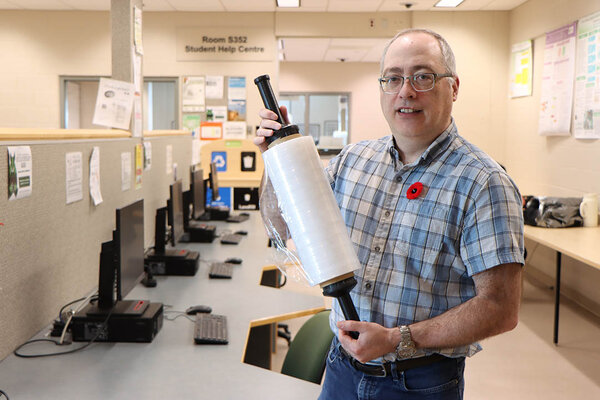
Students from India spend summer on campus
Fifteen top students from universities in India spent the summer working in the College of Arts and Science on projects that crossed disciplinary boundaries
By Chris Putnam
Fifteen top students from universities in India spent the summer working with researchers in the College of Arts and Science on projects that crossed disciplinary boundaries.
It was the second year in a row that the college hosted students through a three-month internship program called the Summer University Research Initiative (SURI), which has goals of enhancing research in the college and building international collaborations.
“What is unique about our summer internships is that we are bringing elite engineering students to work with humanities, social sciences and sciences people in the College of Arts and Science,” said Raj Srinivasan, head of the Department of Mathematics and Statistics. Srinivasan initiated the program and coordinated it this year along with Professor David Parkinson.
Rather than an engineering internship, SURI offered students the opportunity to work on projects outside their field that would broaden their skills and perspectives.
“The experience is quite amazing. Before coming here, I didn’t have any knowledge about these kinds of things,” said Sandeep Yadav, a mechanical engineering student from the Indian Institute of Technology Gandhinagar (IITGN).
Yadav worked from May through July with assistant professor of mathematics Steven Rayan on a project titled “Calabi-Yau Manifolds: Art and Geometry through the Looking Glass.” Together, they investigated six-dimensional spaces, creating animations and 3D-printed models as visual representations of their results.
The engineering student said he was drawn to the University of Saskatchewan because he was “fascinated” by what he read about Rayan’s research. Despite his lack of experience in mathematics, Yadav said he settled in quickly. “The professor is so good, he guided me at each point. I learned a lot of things on this project: a lot of coding and a good sense of how to deal with equations in the higher dimensions.”
Other students worked with faculty members on projects in history, English, physics, geography, psychology and other disciplines.
Faculty have also been enthusiastic about the opportunity to start international collaborations and tap the “unqualified talent” of some of India’s brightest students, said Srinivasan.
Gordon Sarty, head of the Department of Psychology, said he had a “very positive” experience working through the summer with an IITGN student on developing software for his portable MRI prototype.
“I was able to teach him the basics of NMR physics in a couple of days to the level that he was able to work on the software for the MRI,” said Sarty. “It’s actually a very big addition to the project.”
More than 40 students from IITGN and the Malaviya National Institute of Technology Jaipur applied for the summer program, which is funded equally by the College of Arts and Science, the students’ home universities and the research budgets of the host faculty members. The available spots were boosted from 10 last year to 15 in 2018 to accommodate some of the soaring demand.
Calling it “one of the big successes” of the college’s internationalization mission, Srinivasan said he hopes to continue growing the program in the future.


